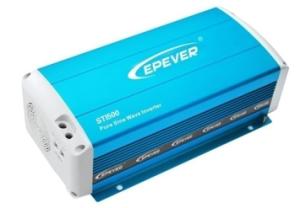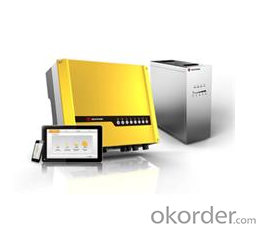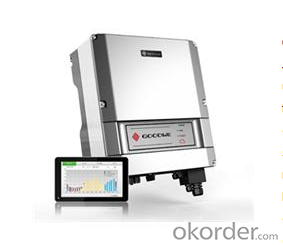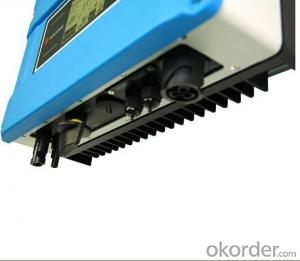Rssi Solar Inverter GW5048D-ES / GW3648D-ES
- Loading Port:
- Shanghai
- Payment Terms:
- TT or LC
- Min Order Qty:
- 10 unit
- Supply Capability:
- 100 unit/month
OKorder Service Pledge
OKorder Financial Service
You Might Also Like
Decription:
GoodWe ES series bidirectional energy-storage inverter is applicable for both on-grid and off-grid PV systems and can control the flow of energy hybrid with its working situation able to be switched automatically or manually. During the day time, the PV plant generates electricity which can be provided to the loads, fed into the grids or charged the battery. The power stored can be released when the loads require it during the night. Additionally, power grid can also charge the storage devices via the inverter.
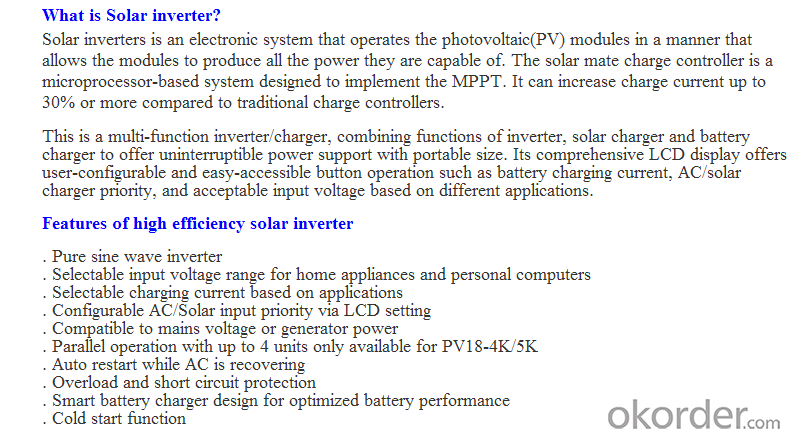
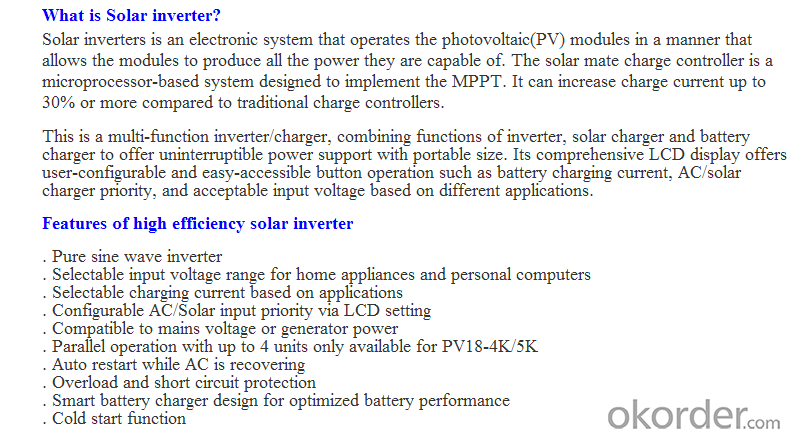
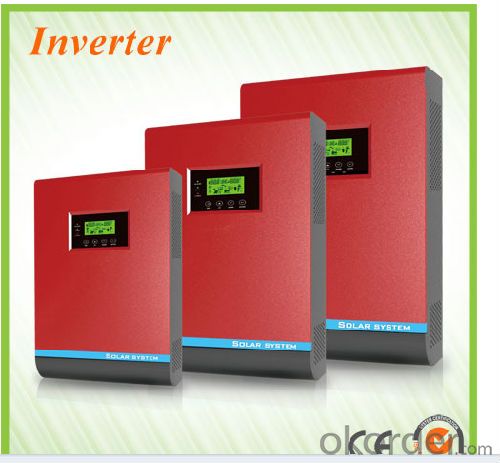
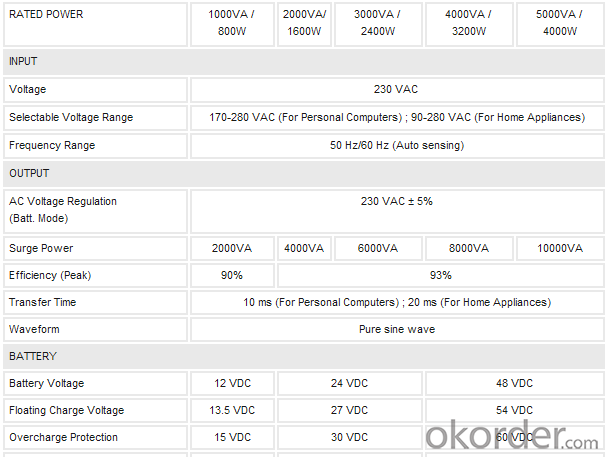
FAQ:What about your warranty?
Our warranty is 1 year
- Q: Can a solar inverter be used in a mobile or RV application?
- Yes, a solar inverter can be used in a mobile or RV application. A solar inverter is designed to convert the DC power generated by solar panels into AC power that can be used to power appliances and devices. In an RV or mobile application, a solar inverter can help convert the solar energy into usable power for charging batteries, running appliances, and powering electronic devices on the go.
- Q: What is the role of a solar inverter in reactive power compensation?
- The role of a solar inverter in reactive power compensation is to regulate and control the flow of reactive power in a solar power system. Reactive power is the power that oscillates between the source and load due to the presence of inductive or capacitive elements in the system. It does not contribute to the actual work done by the system but is necessary for the operation of certain devices. A solar inverter, specifically designed for reactive power compensation, is capable of measuring the reactive power in the system and adjusting its operation accordingly. It can generate or absorb reactive power as required to maintain a power factor close to unity. Power factor is a measure of how efficiently the electrical energy is being used and a high power factor indicates efficient utilization of electricity. By compensating for reactive power, a solar inverter ensures that the solar power system operates at optimal efficiency. It reduces the burden on the grid by supplying or absorbing reactive power locally instead of relying on the grid for compensation. This not only improves the overall power quality but also reduces the losses in the system. Additionally, it helps to stabilize voltage levels and reduce voltage fluctuations, which can be beneficial for sensitive electrical equipment. In summary, the role of a solar inverter in reactive power compensation is to regulate the flow of reactive power in a solar power system, maintaining a high power factor and improving overall system efficiency. It plays a vital role in ensuring optimal operation of the solar power system and reducing the reliance on the grid for reactive power compensation.
- Q: How does a solar inverter handle shading on the solar panels?
- A solar inverter handles shading on the solar panels by utilizing maximum power point tracking (MPPT) technology. This technology enables the inverter to constantly monitor the output of each individual solar panel and adjust the voltage and current to ensure maximum power generation. When shading occurs on a panel, the inverter adjusts the voltage and current to bypass the shaded area and optimize the output from the unshaded areas. This allows the system to still generate as much power as possible, despite the shading.
- Q: Are there any government incentives for installing solar inverters?
- Yes, there are government incentives available for installing solar inverters. These incentives vary by country and region, but they often include tax credits, grants, or rebates to encourage the adoption of solar energy. Additionally, some governments may offer net metering programs, which allow homeowners to sell excess electricity generated by their solar inverters back to the grid. It is important to research the specific incentives available in your area to take full advantage of the benefits.
- Q: Can a solar inverter be used with a smart home system?
- Yes, a solar inverter can be used with a smart home system. In fact, integrating a solar inverter with a smart home system allows for better monitoring, control, and optimization of the solar energy production and consumption in the home. This integration enables homeowners to track their energy usage, maximize self-consumption, and even automate certain appliances or systems based on the availability of solar power.
- Q: How does a solar inverter handle voltage and frequency regulation?
- A solar inverter handles voltage and frequency regulation by converting the direct current (DC) generated by solar panels into alternating current (AC) that is suitable for use in homes and businesses. It ensures that the voltage and frequency of the AC output are within the acceptable range set by the grid or electrical appliances. This is achieved through the use of control circuitry and algorithms that continuously monitor and adjust the DC input to maintain a stable and consistent AC output.
- Q: How does a solar inverter affect the overall system reliability?
- A solar inverter plays a crucial role in the overall system reliability of a solar power system. It converts the direct current (DC) generated by solar panels into alternating current (AC) that is compatible with the electrical grid. By efficiently and accurately converting the power, a high-quality solar inverter ensures optimal energy production and grid integration. It also helps in voltage regulation, frequency control, and protection against grid faults. Therefore, a well-functioning and reliable solar inverter significantly enhance the overall system reliability, maximizing the overall efficiency and longevity of the solar power system.
- Q: What is the role of a solar inverter in preventing overloading?
- The role of a solar inverter in preventing overloading is to monitor the flow of electricity from the solar panels and regulate the amount of power being generated and fed into the electrical grid. It ensures that the solar system operates within its capacity and prevents excessive power generation that could lead to overloading and potential damage to the system or the electrical grid.
- Q: Can a solar inverter be used with solar-powered data centers?
- Yes, a solar inverter can be used with solar-powered data centers. A solar inverter converts the direct current (DC) produced by solar panels into alternating current (AC) that can be used to power electrical equipment, including data centers. By connecting the solar panels to a solar inverter, the generated solar energy can be effectively utilized to power data centers, making them more sustainable and reducing reliance on traditional power sources.
- Q: Can a solar inverter be used with solar-powered irrigation systems?
- Yes, a solar inverter can be used with solar-powered irrigation systems. A solar inverter is used to convert the direct current (DC) power generated by solar panels into alternating current (AC) power that can be used to operate electrical devices. In the case of solar-powered irrigation systems, the solar inverter would be used to convert the DC power produced by the solar panels into AC power to run the irrigation pumps and other electrical components of the system. This allows for efficient and sustainable operation of the irrigation system using solar energy.
Send your message to us
Rssi Solar Inverter GW5048D-ES / GW3648D-ES
- Loading Port:
- Shanghai
- Payment Terms:
- TT or LC
- Min Order Qty:
- 10 unit
- Supply Capability:
- 100 unit/month
OKorder Service Pledge
OKorder Financial Service
Similar products
Hot products
Hot Searches
Related keywords
